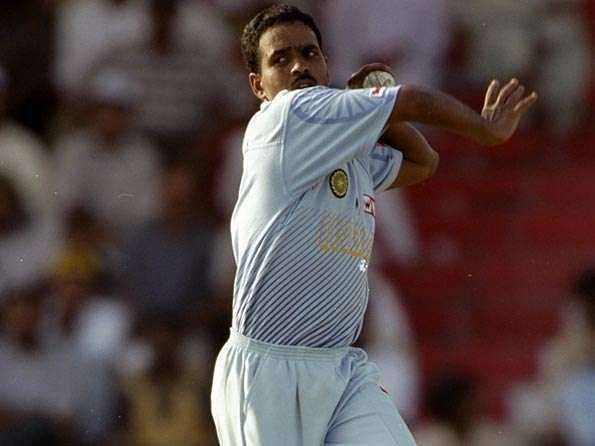
Most economical 10-over spells by Indians in ODIs
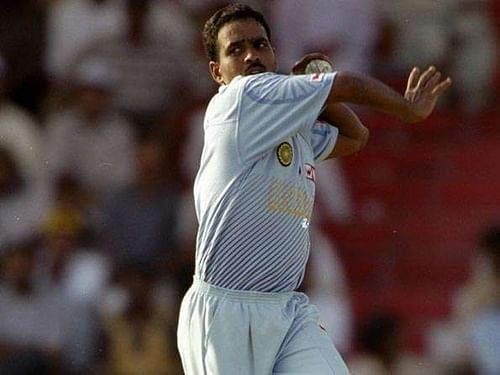
Sunil Joshi has taken over as the Chairman of the Selection Committee of the Indian men's cricket team. This presents an opportune time to reflect on a distinction he holds for India in One Day International (ODI) Cricket.
Joshi holds the record for the most economical 10-over spell in India's ODI cricket history. Considering the flat pitches across the world on which ODIs are played nowdays, clubbed with the aggressive nature of batting in the ODI format post the advent of T20 cricket, this record is likely to stand the test of time.
Let us have a look at the 3 most economical 10-over spells by Indians in ODI cricket.
#3 Anil Kumble and Harbhajan Singh
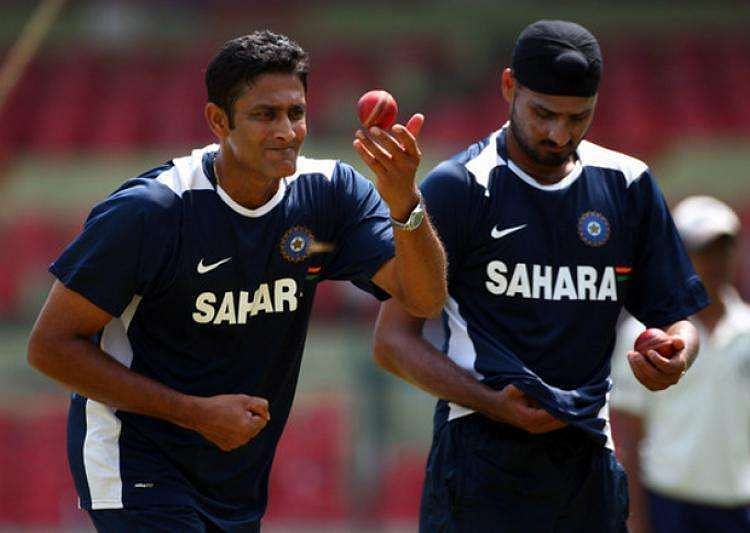
Anil Kumble and Harbhajan Singh share the record for the 3rd most economical 10-over spell by Indians in ODI cricket. While Kumble achieved this distinction during his spell of 10-4-14-3 against Kenya in 2001, Singh replicated it with a spell of 10-2-14-2 against England in 2004.
Kumble's spell came in the 4th match of the Standard Bank Triangular Tournament, played at Bloemfontein on October 12, 2001. After winning the toss and electing to bat, Kenya were off to a disastrous start - losing their first 3 wickets with just 13 runs on the board; Ajit Agarkar claiming all the 3 wickets. It was then Kumble's turn to weave his magic with a spell that was not only economical but produced 3 wickets as well.
Kumble got a wicket with his 2nd delivery itself catching the Kenyan captain Maurice Odumbe plumb in front of the wicket. He then dismissed opener Kennedy Otieno, again plumb in front, with the last delivery of his 3rd over. This was followed by another leg-before the wicket verdict against Thomas Odoyo on the third delivery of Kumble's 5th over. He finished by conceding just 14 runs in the 10 overs with 4 of them being maidens, apart from accounting for 3 wickets. India went on to win the match by 10 wickets after Kenya were rolled over for 90 runs.
Singh's spell came in the 2nd match of India's tour to England, played at the Oval on September 3, 2004. After losing the toss and being put in to bat, England were off to a brisk start with Marcus Trescothick and Vikram Solanki adding 71 runs for the first wicket in just 11 overs. But Singh changed the complexion of the match after being introduced into the attack in the 12th over of the innings.
He struck with the third delivery of his 1st over, having Trescothick caught by Lakshmipathy Balaji. He followed that by having Michael Vaughan caught by Rahul Dravid with the first delivery of his 3rd over. Although he did not take any further wickets, he continued to be economical and finished his 10-over spell conceding just 14 runs and claiming 2 wickets. But this spell turned out to be in vain, as the English batsmen took the other Indian bowlers to the cleaners to end up with a score of 307 for the loss of 5 wickets in their allotted 50 overs. The Indian batsmen buckled under the pressure of this huge run chase, folding up for 237 to lose the match by 70 runs.
#2 Javagal Srinath
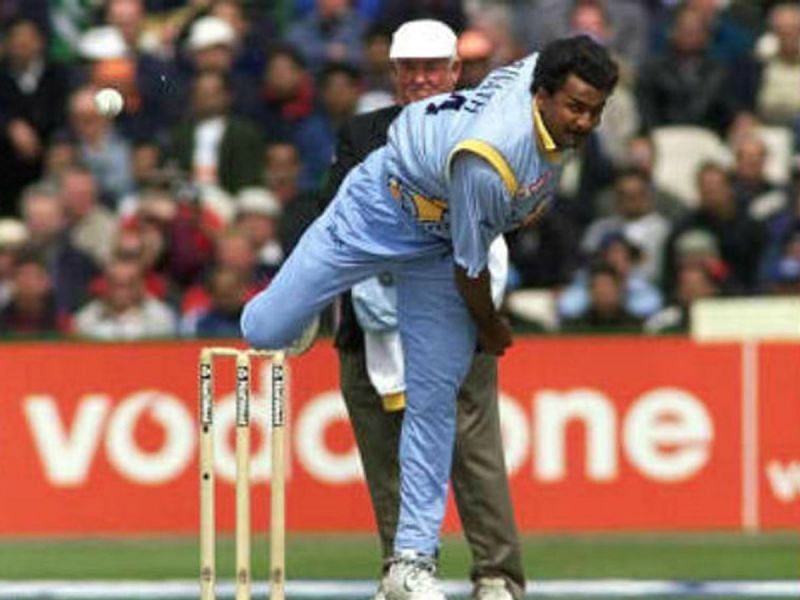
Javagal Srinath holds the record for the 2nd most economical 10-over spell by an Indian in ODI cricket. He achieved this distinction during his spell of 10-2-13-3 against New Zealand in 2003.
Srinath's spell came in the 6th match of India's tour to New Zealand, played in Auckland on January 11, 2003. After losing the toss and being put in to bat, New Zealand were off to a slow but steady start reaching 20 for no loss at the end of the 9th over with Srinath conceding just 4 runs in his first spell of 5 overs.
After Ashish Nehra and Agarkar had taken a wicket each, Srinath came back into the attack for his second spell and claimed a couple of wickets in consecutive overs. He first clean bowled Mathew Sinclair, the Kiwi opener, with the last ball of his 6th over. He followed that up by dismissing Chris Cairns, again clean bowled, with the fourth ball of his 7th over. Srinath was re-introduced into the attack for his final spell in the 40th over of the innings and bagged his 3rd wicket by having Kyle Mills caught by Dravid with the fourth delivery of his 9th over. He finished his spell with a maiden over, conceding just 13 runs in his 10-over spell and accounting for 3 wickets.
New Zealand was restricted to 199 for the loss of 9 wickets in their 50 overs and India managed to win the match by just one wicket, Virender Sehwag leading the chase with his knock of 112 runs.
#1 Sunil Joshi
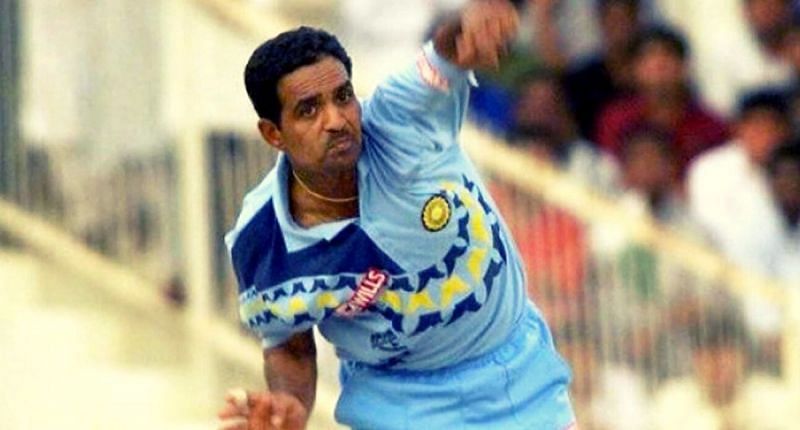
Sunil Joshi holds the record for the most economical 10-over spell by an Indian in ODI cricket. He achieved this distinction during his spell of 10-6-6-5 against South Africa in 1999.
Joshi's spell came in the 2nd match of the LG Cup, played at Nairobi on September 26, 1999. After winning the toss and electing to bat, South Africa were off to a decent start with an opening partnership of 32 runs. But once Joshi was introduced into the attack in the 10th over, he changed the course of the match by running through the South African batting line-up and hardly conceding any runs in the process.
Joshi started by having Herschelle Gibbs caught by Dravid with the second delivery of the 10th over of the innings. He then cleaned bowled the other opener Boeta Dippenaar with the last ball of the 16th over. He followed that by getting the South African captain Hansie Cronje caught by Sadagoppan Ramesh with the second delivery of the 22nd over to reduce South Africa to 45 for the loss of 4 wickets.
Joshi returned for his final spell later in the innings and took a couple of wickets in the 38th over to quell any chances of South Africa posting a decent total on the board. He first had Jonty Rhodes caught by Nikhil Chopra with the first delivery of the 38th over and followed it by having Shaun Pollock caught by Dravid with the third delivery of the same over.
Joshi finished his extra-ordinary spell claiming 5 wickets and conceding just 6 runs with six maiden overs in his 10-over quota. This helped India to dismiss South Africa for 117 runs and they went on to win the match by 8 wickets.
Also see | Javagal Srinath: The lone pace warrior of 1990s for India